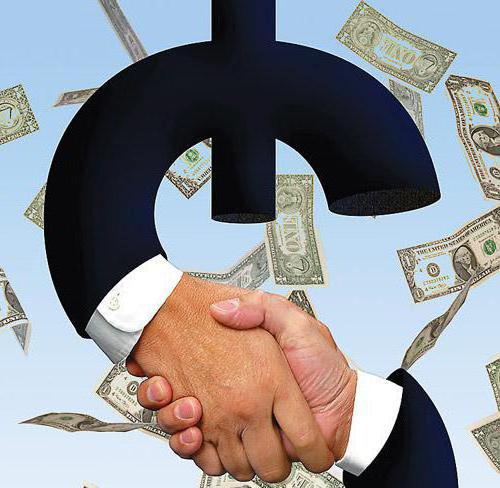The final stage of sales is the completion of the transaction. The completion of the transaction in sales is the last final chord. Sales and negotiation specialists have such impressive fees for the reason that they know many ways to complete a sales transaction. This knowledge allows you to get high results and long-term partnership with customers.
There is good news. Sales completion techniques are not classified information. First, consider the completion phase of the transaction as a sales phase.

Description of the closing phase of the transaction
At the stage of completion of the transaction, contact with the client was established, needs were opened or formed, a presentation was made, resistance and opposition were settled and worked out. If all stages have been worked out efficiently, all non-verbal reactions have been tracked and all doubts of the client have been settled, then at the stage of completion of the transaction there should not be any pitfalls in sales, except force majeure, which cannot be influenced.

Examples of client unavailability to close a deal
The client’s behavior at the stage of transaction completion may vary and signal potential problems. Consider the completion of a transaction in sales, examples of solving cases related to problem situations.
Not disposed to communication: most likely, poor contact was made, but do not forget about the client’s right to a bad mood.
Ignores communication: avoidance, does not want to voice a negative decision or the fact of lack of information.
He doesn’t ask questions: sometimes you should be wary if the client does not ask clarifying questions on the offer and the contract, doesn’t even try to bargain on the amount and terms. Having ruled out the possibility of your own paranoia, nevertheless ask your client for an opinion about the offer, ask a number of questions about the advantage of your offer over past attempts by the client to solve the same problem. If a client readily tells stories, dreams of a joint future, but does not voice specific numbers, dates, volumes, prolongs the discussion, then it is most likely too early to talk about closing the deal. If the situation does not change, the meetings are postponed, the dates “creep” - you should stipulate with the client the opportunity to return to the dialogue a little later, when something has changed for you or the client.

Features of the seller’s behavior at the conclusion of the transaction
If the seller is active, emotionally charged, knows how to make contact and win people over, you should not worry about the success of the transaction. It is important to remember the "need" - the excess value of the transaction - and try not to demonstrate it to the client at the final stage. This is often used by experienced negotiators. Seeing the seller’s behavior as needy, negotiations easily turn into tough for the needy party. The ability to control your emotions, non-verbal manifestations and behavior are qualities necessary for successful completion of transactions.
The reliability of the information and the level of expertise of the sales manager are factors that should not be ignored when the completion of a sales transaction is at stake. This is especially true for managers who have little experience or modest knowledge of the technical characteristics of the product. It is important to ensure that the client has received comprehensive and up-to-date product information. If the seller doubts his answers to questions to the client or does not know the answer, it is worth securing the support of technical specialists or a manager. Misleading the client and “confusion in the testimony” is undesirable at all stages of the sale and may cause difficulties in closing the transaction.

Ways to complete a deal in sales
Techniques for completing a transaction in sales are proven techniques, phrases that help you quickly get the desired result.
The result of the completion of the transaction may be a contract and payment, or maybe a refusal of the transaction without delay and loss of time.
It is important to feel the client’s mood well and make several attempts at closing the transaction. It is important to monitor the behavior of the client and listen carefully to what he is talking about.
The following types of transaction completion in sales can be distinguished:
- direct (aimed at the buyer);
- indirect (manipulative);
- psychological.

Clarification
Common and effective for both retail and wholesale sales is the “refinement” technique. The client can clarify the way in which he is ready to calculate, the volume of purchases, the product range (ask for old applications, new needs), the counterparty card. When it comes to sales b2b, that is, it makes sense to clarify who should be contacted about the contract, payment, acts of work, documents. There are a lot of options. Clarifying questions can be thought up for each type of product or service.
Purpose: to track the reaction of the interlocutor and set the vector for the completion of the transaction.
Clarification refers to the direct types of transaction completion.
Deficit
In almost all sales, it makes sense to use the "deficit" technique when boarding a client. Deficiency can become:
- Validity of the offer (with subsequent increase in value);
- validity period of discounts, promotions;
- limited quantity of goods;
- time of the head to sign the contract.
Proper use of technology will help speed up the decision-making process by creating an additional source of urgency. This is a manipulative technique. It is worth using it in place and not contradicting your own terms and conditions. This is quickly detected by customers, and the seller runs the risk of being in an uncomfortable position.
The bad professor
When using some techniques, closing a transaction in sales It requires skill and a certain degree of artistry. For example, the technique is “a bad professor,” andFirst, in the sources, it is called the “Colombo effect”, in honor of the incompetent detective who won the hearts of millions of spectators. How can I use this image to achieve sales success? Easy. First of all, people like to be fine. Do not be afraid to be imperfect, you should be afraid to be insincere. Secondly, a question asked outside the logical sequence causes a slight confusion for the client and, most likely, provokes him to say what he really thinks. How does this work with examples? The seller can return to the office of the decision maker after meeting for a forgotten pass, phone, scarf, pen and as if casually ask: "Tell me, please, what is stopping you from signing a contract?"

The well-known business coach Radmilo Lukic liked to ask clients at the stage of completion of the transaction: "What is between you, me and happiness?" This is also an example of using this technique.
By experimenting with different options, each seller will find their own tool that will help open the hearts of customers. Practice and only practice will make an ordinary seller an effective master of completing transactions in sales.